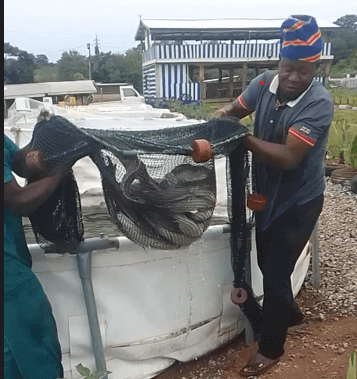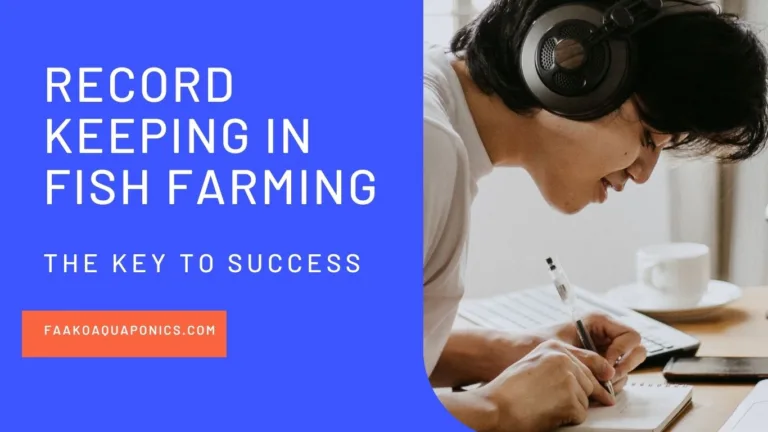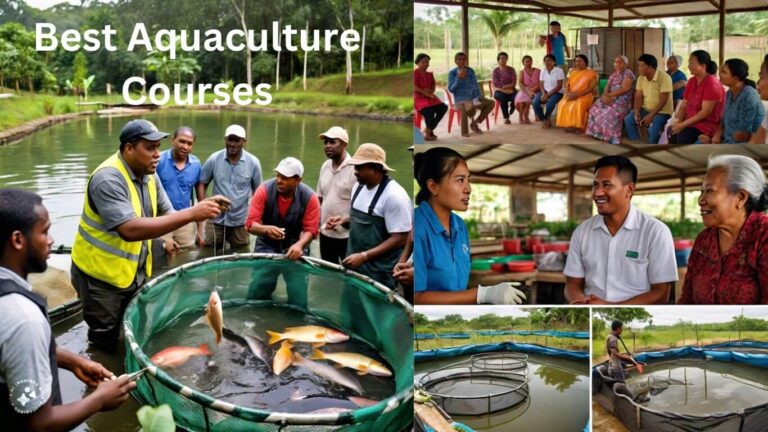Scooping net and Dragging net are two essential tools that every fish farmer needs to have in their fish farm. Both have their unique advantages and are suited to different tasks, but which one is right for you?
In this blog post, we’ll compare these two types of nets to help you make an informed decision. And if you’re ready to upgrade your fish farming tools, we’ve got links to the best options available on Amazon.
Scooping Net: Precision and Versatility
A scooping net, also known as a dip net, is designed for precision and ease of use. It’s perfect for situations where you need to handle fish individually or in small groups.

Advantages of a Scooping Net
1. Precision Handling: Scooping nets allow for gentle and precise handling of fish, making them ideal for tasks such as transferring fish between tanks, sorting, and examining individual fish.
2. Versatility: These nets come in various sizes and shapes, allowing you to choose one that fits your specific needs. Whether you’re working with small fry or larger adult fish, there’s a scooping net for the job.
3. Ease of Use: Lightweight and easy to maneuver, scooping nets are user-friendly and can be used by individuals of all skill levels.
Disadvantages of a Scooping Net
1. Limited Capacity: Scooping nets are not suitable for moving large quantities of fish at once. This can be energy and time-consuming if you need to handle many fish.
2. Manual Effort: Using a scooping net requires manual effort, which can be tiring if you’re working with a large number of fish over an extended period.
3. Stressing Fish: in dealing with large quantities of fish, scooping individually puts them under stress.
How to Use a Scooping Net
1. Selecting the Right Net: Choose a scooping net appropriate for the size and type of fish you are handling. Smaller nets are better for fry, while larger nets are suitable for adult fish.
2. Approach Slowly: Move slowly and calmly towards the fish to avoid startling them. Sudden movements can cause stress and make the fish harder to catch.
3. Positioning the Net: Submerge the net in the water, positioning it under the fish. Gently lift the net upwards, ensuring the fish is securely inside. Most of the time you need to pull the net towards the edge of the fish pond before lifting to avoid the fish escaping.
4. Transferring Fish: Carefully transfer the fish to another tank or holding area. Ensure the net remains submerged until the fish is safely out to minimize stress and injury.

Dragging Net: Efficiency and Coverage
A dragging net, or seine net, is designed for efficiency and large-scale operations. It’s the go-to tool for capturing and managing large numbers of fish simultaneously.
Advantages of a Dragging Net
1. Large Capacity: Dragging nets are excellent for capturing large quantities of fish at once, making them ideal for harvesting or moving fish in bulk. This is highly recommended for commercial fish farmers. When I began my fish farm with only the scooping net, it was difficult to harvest them when I needed them in bulk until I acquired the dragging net.
2. Efficiency: By covering a wide area, dragging nets can save time and effort when compared to scooping nets. This is particularly useful in larger ponds or tanks.
3. Strength and Durability: Made from robust materials, dragging nets can handle heavy loads and withstand the rigors of extensive use.
Disadvantages of a Dragging Net
1. Potential Stress on Fish: Dragging nets can cause stress and potential injury to fish due to the mass capture process. When fish are inside the net, they use their fins to hurt each other. Care must be taken to minimize harm.
2. Requires Multiple Operators: Using a dragging net often requires a team, as it can be cumbersome for one person to handle alone. So you need at least two persons to hold it. One from this end and the other from the other end.
3. Space and Setup: These nets require ample space and a proper setup to be used effectively, which might not be feasible in smaller operations. That is why I mentioned above that is highly recommended for commercial fish farmers.
How to Use a Dragging Net
1. Preparing the Area: Ensure the pond or tank is suitable for using a dragging net. Clear any obstructions that could entangle the net.
2. Setting Up the Net: Spread the net across the water surface. If the net is large, you may need a team to help with this process. You need at least two people to use this. One holds from one end while the other from the other end. In some cases, you need more than one person.
3. Dragging the Net: Slowly drag the net through the water, ensuring it remains submerged. Use a steady and consistent motion to guide the fish toward one end of the net. If care is not taken, all of them will escape from the net. That is why there is the need to hold it well, let it torch under the pond if possible, and also the edges.
4. Collecting the Fish: Once the fish are gathered in the net, carefully lift it out of the water. Transfer the fish to a holding tank or other designated area, taking care to minimize stress and injury.

Which Net Should You Choose?
The choice between a scooping net and a dragging net largely depends on the scale and specific needs of your fish farming operation.
If you need precision and handle fish individually or in small groups, a scooping net is your best bet. The scooping net is also best for ornamental fish farmers and those also practicing point and kill.
On the other hand, if efficiency and handling large quantities of fish are your priorities, a dragging net will serve you well. Putting it short, for those farming for ornamental purposes or hobbyists, scooping net alone would be enough. But for those farming fish for commercial purposes, since the farm is relatively large, both the scooping net and dragging net are recommended. This is because there are instances such as picking the individual will require scooping net. But instances like harvesting too require the dragging net to capture more fish at once.
Recommended Scooping Nets on Amazon
1. Frabill 3047 Power Stow Poly Net: This net offers durability and versatility, perfect for handling different sizes of fish.
2. KastKing MadBite Folding Landing Net: Lightweight and easy to use, this net is great for both beginners and experienced fish farmers.
3. SF Fly Fishing Landing Net: Designed for precision and gentle handling, ideal for smaller fish and fry.
Recommended Dragging Nets on Amazon
1. Fishing Sir Seine Net: A reliable option for capturing large quantities of fish, made from high-quality materials.
2. Joy Fish Cast Net: Known for its durability and efficiency, this net is perfect for large-scale operations.
3. Betts Old Salt Premium Cast Net: This net offers excellent coverage and strength, ideal for harvesting large numbers of fish.
Final Thoughts
Investing in the right net is crucial for the success of your fish farming operation. Whether you opt for the precision of a scooping net or the efficiency of a dragging net, having the right tool will make your work easier and more productive. Don’t wait—upgrade your fish farming equipment today with our top picks from Amazon. Click the links above to make your purchase and take your fish farming to the next level.
You can also check out the post Best Nets For Fish Farming: Various Nets Used In Fish Farming.
To use pumps to scale up your fish farming, you can also check out this post Best Pumps for Fish Farming.





